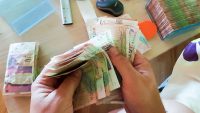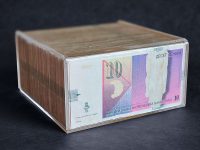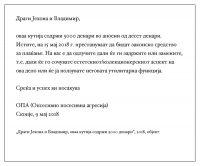Anyway, this motif does not appear in art accidentally, and its exploitation exponentially increases, perhaps due to one of the key confrontations arising from the dilemma of the degree of “artistic” ingenuity of the creators of complex financial instruments in the modern neoliberal system that avoids any regulation – a domain of freedom regularly reserved for the arts
500 x 10> 5000: Art as an Anomaly in the Capitalist System
The history of money compared to the history of mankind is really minor. Today, most of the money in the world exists only as numbers and digits, in the form of bits circulating through digital transfers, such as computerized records. With the emergence of credit cards, and especially with the emergence of the first crypto-currencies a decade ago (Bitcoin in 2009), the tendency is to use the material forms of moneyless and less, making the financial system more complex, more dynamic, but also more abstract and more dangerous.
While some artists reflect on money, their material and non-material background and value, their variable form over time, the way of their functioning and circulation in modern society, through analysis, deconstruction and physical transformation, or through conceptually oriented projects in which they are questioning the enormous influence of money in almost all aspects of society, the work of OPA, basically a small readymade object based on accumulation, represents a subtle appropriation with a small intervention that stands out as a kind of monument, a time capsule that simultaneously determines the moment of practical change in the monetary system, but also positions it as a gap that we are facing. They are doing that precisely with the open dilemma that clearly indicates both the power of choice and our role and (non)participation in creating economic policies and the financial system.







